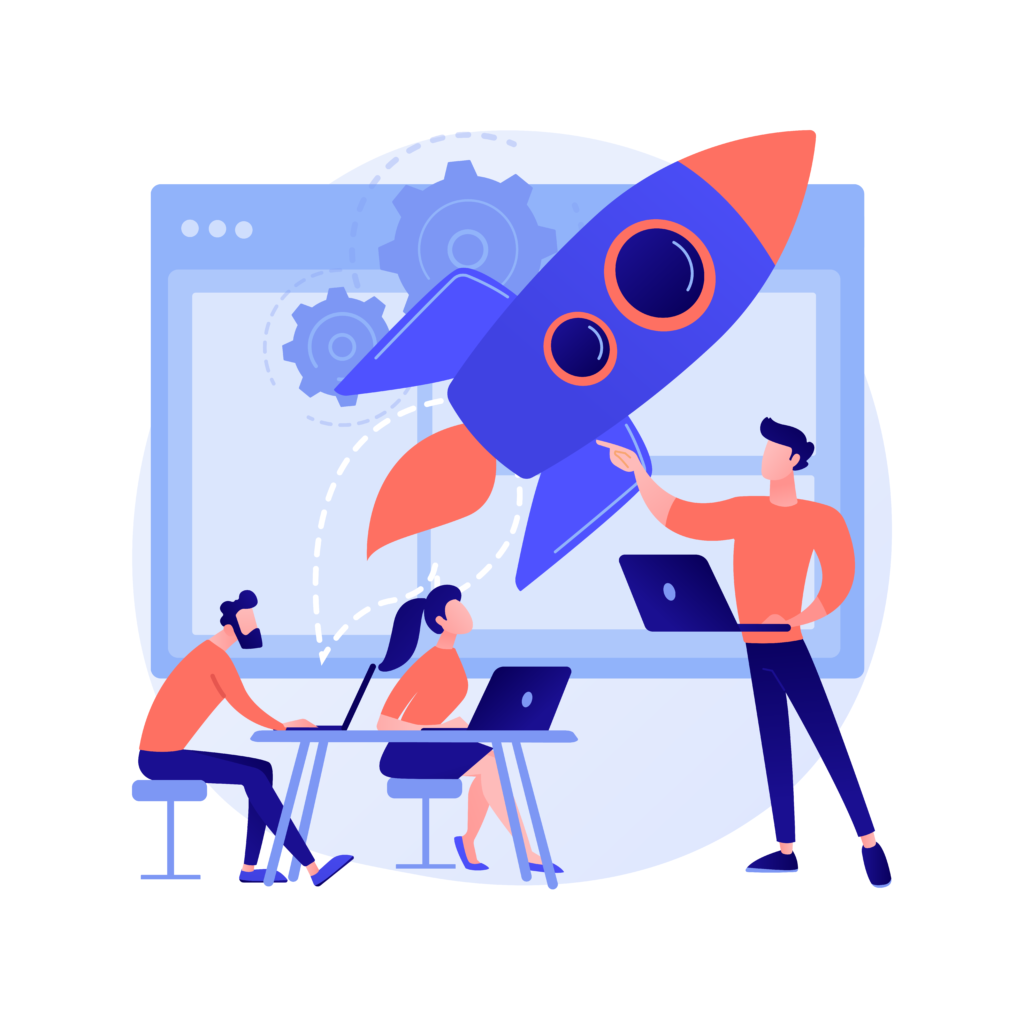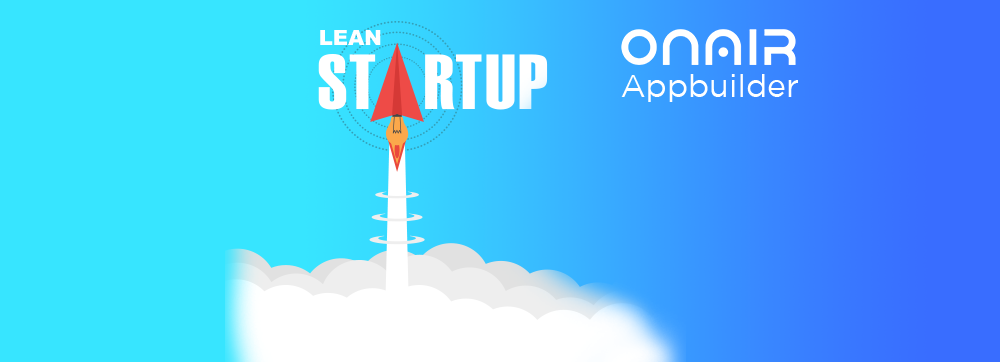No-code app development is something that every startups should consider. Startups or app startups do a few things differently compared to traditional businesses. They offer solutions to real-life problems, operate and function quickly, and provide constant updates and iterations. In addition, they can reach a considerable number of people, making these startups revolve around technology.
It is because the internet helps connect people from around the world and breaks down all barriers. But, on the other hand, traditional businesses can serve a few people, and they cannot scale up quickly.
What exactly is the Lean Startup Cycle?
When the founders launch their no-code app development, they are dedicated to working quickly to develop something that the users need rather than putting an idea randomly out there and hoping that it works. Creating a lean MVP is a process that includes following the Lean Startup Cycle.
As startups are different, the way and style they’re discovered, founded, built, and grown are other, too. Although creating and developing a startup differs widely, one tested solution is through the Lean Startup Cycle.
- Build:Build a prototype and build upon your no-code app
- Measure: Gather data, feedback, and statistics
- Learn: Validate your hypothesis, keep testing, and work on new ideas
The Lean Startup Method includes going for many different takes to improve your result. Thus, it’s alright to make mental adjustments while going through the process. The journey varies for everyone, even when the foundations are similar.

There’s a possibility that you want to quickly jump into your no-code app development and keep going, go until something is created. However, try to pause for a moment and invest some time in learning.
Before you start to build an app, put in some time to do the following correctly. These are:
Establish a Hypothesis
Your no-code app development must offer a solution to a specific problem that millions of people face. If you want to move forward in an organized way, always try to begin with a hypothesis. It would help you test in your development process.
If there’s no starting point to refer back to and guide your future work, there’s a possibility that you’ll face problems in establishing your direction.
Evaluate your Hypothesis with Quantitative and Qualitative Methods
It has multiple meanings. However, the best way is to check the authenticity of your idea by talking to people. Even though it’s a traditional idea, there’s no better way to achieve real insight than by knowing it from real-life people, as these are the people who might be using your app someday.
Remember that qualitative research helps you explore new ideas, trends, and unique opinions. It would help if you validated your idea before you move on to create a prototype or MVP. On the other hand, the quantitative method assists you in checking out factual data. For example, behaviors, surveys, etc. Therefore, quantitative research is essential to move forward and know exactly what type of solution people their problem.
Go for an Experiment to Test your Hypothesis
You have reached a point by now when you can finally begin to shift into the actual development phase. Different startups function in different ways. Some create a minimum viable product and make it accessible for real users. However, some build mockups, or as we say it, prototypes to check before actually putting it in the market.
Your journey is entirely yours, but with Bubble, you have the option to start developing your no-code app without as much friction as required in developing a prototype. With Bubble, you can quickly build an MVP just as fast as a prototype. Then, you can send it to test users if you keep it unveiled till the time you are done with the internal testing.
However, remember that the motive of an MVP is to achieve the leanest working solution. Thus, could you not keep it for too long? If your initial research indicates that your hypothesis is true, put your product on the market to gain honest and valuable feedback and prove your hypothesis true. Then move forward via the Lean Startup Cycle.
Build Phase
After learning from the initial phase, which includes setting a hypothesis and then researching it, the next step includes moving into the build phase. In this phase, you’ll create an experiment or build a prototype. With Bubble, you don’t need to waste your time backtracking. It is because, with Bubble, you already have the pieces that need to be connected.
It simply means you can easily skip a few steps to speed up your development process. As there are so many advantages of creating your app with the help of Bubble, your build phase will be more straightforward compared to another founder. So rather than hiring teams, search for co-founders and figure out the ways to turn your highly technical dream into reality even without knowing to code.
What to Build
You can’t figure out what to build if you’ve not done your initial homework. After you are done with your research and understand which problem your app will offer a solution to, the next step is to build it.
However, at this point, do not forget that you are working to develop an app you’ve dreamt about for so long. Just remember that You’re building an app that addresses your hypothesis directly along with the research you conducted in the initial phases.
Keep your app as basic as you can. Try to save your resources by playing it smart. Remember that your goal in this phase is to collect essential data, so don’t forget to make that your focal point.
Ways to gather data from the build phase:
- Questionnaires or surveys
- Tools like Inspectlet
- Interviews
How to Measure the Data?
Once your experiment starts working, the reality is still far from done. Just randomly deciding on the best action plan is not enough after your MVP is out. You are required to get down in the trenches. No product becomes perfect just after the first round. So, it would help if you started measuring your data.
To help you with direction on how to measure, try to answer these important questions during this measuring phase:
- What is the result of your MVP as compared to the original hypothesis?
- How effectively have early users accepted your idea?
- Is the validation significant enough to carry on with your original hypothesis?
- What is the next step if anything gets disproved?
It is a crucial step to be able to answer these initial questions. It helps you decide whether your ideas are worth pursuing or not. However, in the later phases, you must remember that when you go through the build, learn, and measure phases again, continue to do earlier. It helps you expand, iterate and improve the working of your no-code app development.
You can also use the measure phase to get the little things validated, like a layout of a menu bar and as big as features of a new app. If, after the launch of your MVP or experiment, you determine that the collected data is positive, validating, and worthy, continue with your hypothesis and keep moving forward.
However, in case the result is not good enough, you have the option to pivot. For now, you pay attention to developing the most minimum viable product, one that is by your hypothesis and works out exactly the way you’ll retrieve and measure your resulting data.
Learning from Your Data
When you get comfortable in the “learn” phase, and after gathering enough data in hand, you must move forward and make a decision confidently. But, first, spend some time evaluating the collected data.
Ask yourself the following types of questions:
- Did my targeted customer base want or require my product?
- the problem I’m offering a solution effective enough to continue moving forward?
- Is my targeted customer base suitable?
- Is the revenue model that I proposed appropriate?
- Are the channels, technology, and platforms that I’m using proper?
You can ask yourself uncountable questions and evaluate your app development process. However, you must use these questions as a starting point while deciding on the next direction. Just remember that it’s alright, even if your hypothesis gets debunked. Your journey doesn’t end here.
The purpose of this vital step in the lean startup cycle is to assist you in deciding if you want to carry on with the original hypothesis or Pivot. The developers need to stay open-minded to reviews, feedback, and critique while in the learning phase.
Although it is complicated to hear negative feedback about your project or idea, you must take it positively. It is important because each piece of information you get can be used as an effective tool to improve your app and move forward in a better way in the future.
Proceeding with your MVP
Once you evaluate your data, you’ll better understand whether you should proceed with the original idea or not. The decision to proceed will depend on user and data feedback. If your hypothesis is proved valid and you see great interest, continue moving forward.
There are endless options, and everything is based on your particular app so allow your data to guide you. There’s no harm in staying open to critiques and negative feedback, as it will help you decide when to reevaluate and make a change in your journey.
Ways to Pivot based on the Lean Startup Method
Zoom-in pivot: “Zoom in” on a particular feature of the MVP. There are chances that what was earlier a minor part may become the entire product.
Zoom-out Pivot: It is Just the opposite of what was earlier. Your entire product may become a single feature or even a much more significant effect.
Customer segment pivot: There are possibilities that your hypothesis is true, but the customer base is wrong. So, keep your MVP and retest it in a new market.
Platform pivoting: The customer base and the app might be perfect, but the channel or the platform could be wrong. Consider a new platform and go back through the build, learn, and measure cycle again.
Value capture pivot: you must consider how your value is perceived? Ask yourself if you are using the correct structure of revenue or monetization. Make necessary changes to improve the result of your hypothesis. It also can change perception as a whole.
The engine of growth pivot: check out whether you are using the right strategies for growth or not.
Channel pivot: Try to reach your targeted customers or users using different channels. For example, see if you are going for a third-party platform when you should directly sell to customers or vice versa.
How to Implement the Lean Startup Cycle in Your No-Code App Development?
If you decide to carry on with the original hypothesis or Pivot, you must continue the Lean Startup Cycle. With every addition, change, or iteration, you must build, learn, and measure all over again.
Try to resist your urge to settle down and get comfortable with whatever you are getting. It will only slow down your progress and restrict your growth. Instead, stay open to feedback, regardless of negative or positive, and continue to move through the lean startup cycle.
You can create your own app with ON AIR App Builder in 3 simple steps. Try now!


